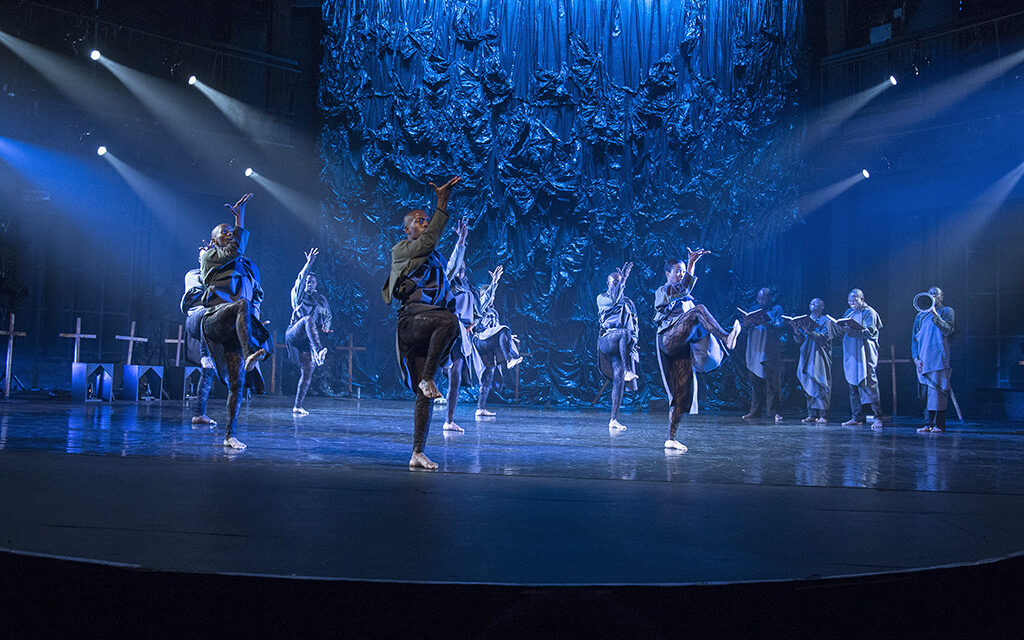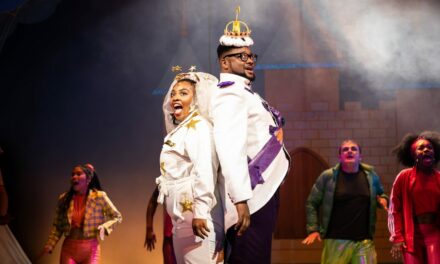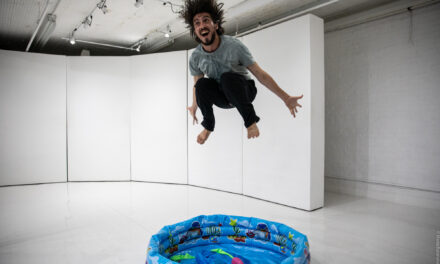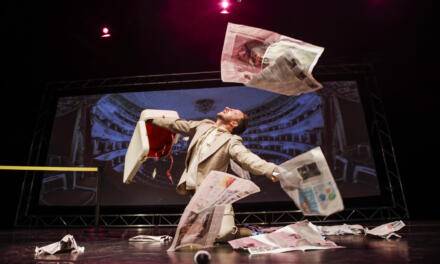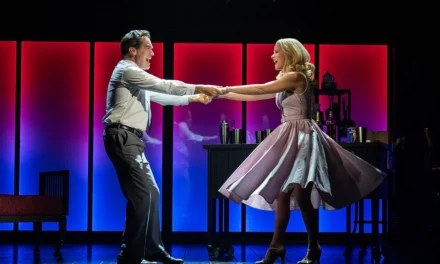In darkness, a quiet sobbing, acutely intimate in the vastness of the Barbican main stage. Now crying, now whimpering, the amplified voice grows in aching graduality. I can’t but reflect on the pain that I feel on listening to another human being’s voice of sorrow. It’s uncomfortably long, uncomfortably obvious, and it reels me in.
This is an extraordinary beginning to an extraordinary piece. Gregory Maqoma is a prolific and successful South African choreographer who has a well-known presence in the UK through collaborations with choreographers including Akram Khan and Sidi Larbi Cherkaoui, as well as a recent high-profile collaboration with Idris Elba and Kwame Kwei-Armah in Tree. He founded Vuyani Dance Theatre 20 years ago while undertaking a scholarship at P.A.R.T.S. in Belgium under the direction of Anna Teresa de Keersmaeker.
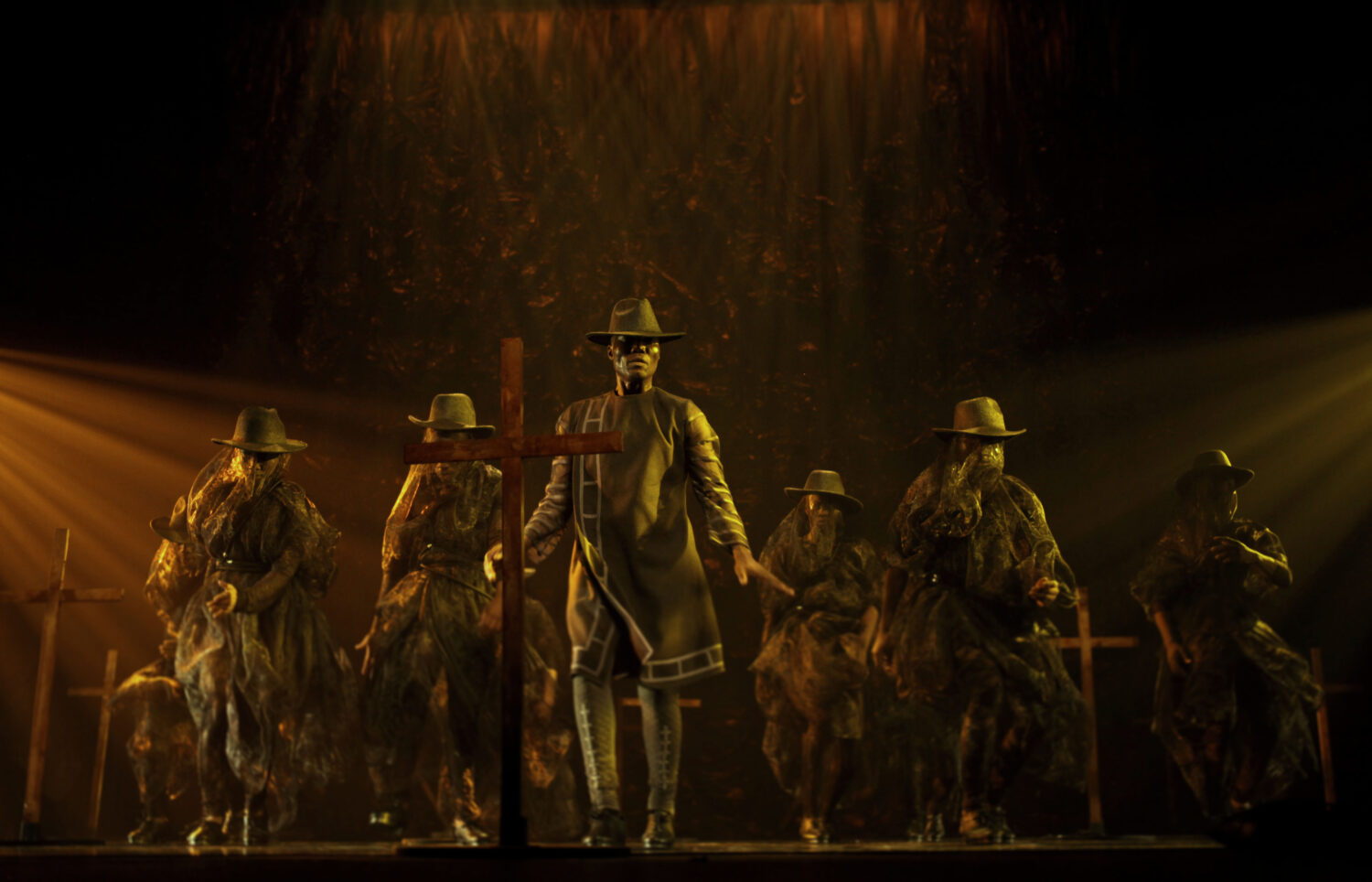
Gregory-Maqoma’s Cion: Requiem of Ravel’s Bolero. Photo by John Hogg.
In Maqoma’s choreography, all the performers exude an assuredness which is completely gripping, whilst presenting theatre that embraces, grapples with, and (oddly) celebrates grief. This is not an easy thing to do in theatre – the obvious pitfall is simply awakening sympathy in spectators or in beating the same drum for a one-dimensional presentation of human experience.
Cion: A Requiem avoids this. Oliver Hauser’s set consists of a number of crosses, suspended from the ceiling and around the edge of the stage evoking the graveyard setting. The theme of death is unavoidable. But as the keening noises of a shuffling, bent-over man turn improbably into melody as the mourner becomes a singer, nothing is quite what it initially seems in this piece.
The ensemble presents a satisfying rendition of Maqoma’s signature choreography: stark, sharp, but hugely detailed. They stand in a menacing group before breaking into poses, then ceaseless movement centering on spinal fluidity, complex hand movements and a connection to the floor. The dancers remind me of zombies, hands outstretched as they rise from the ground; of a congregation witnessing an exorcism; of slaves on a plantation. There is an assured violence about the choreography, more obviously with the floor-slapping, tumultuous moments and the strange, torturous ear-pinching inflicted on the central character by a crazed priest character as the others look on in greedy judgment. But the violence lurks in every thread of this piece.
Maqoma dances a central character, inspired by the figure of Toloki, a professional mourner, from Zakes Mda’s novels Cion and Ways of Dying. Dressed in a blanket-like overcoat, leggings, and shoes, he is an oddly clown-like figure, vulnerable and ridiculous, at times milking the pathos. This is the genius of the piece: it places in a single moment the paradox of a heart-ripping response to the millions of lives lost, black lives in particular, to “greed, power and religion,” (from Maqoma’s program notes) and the humor, beauty, and awkwardness of everyday human life.
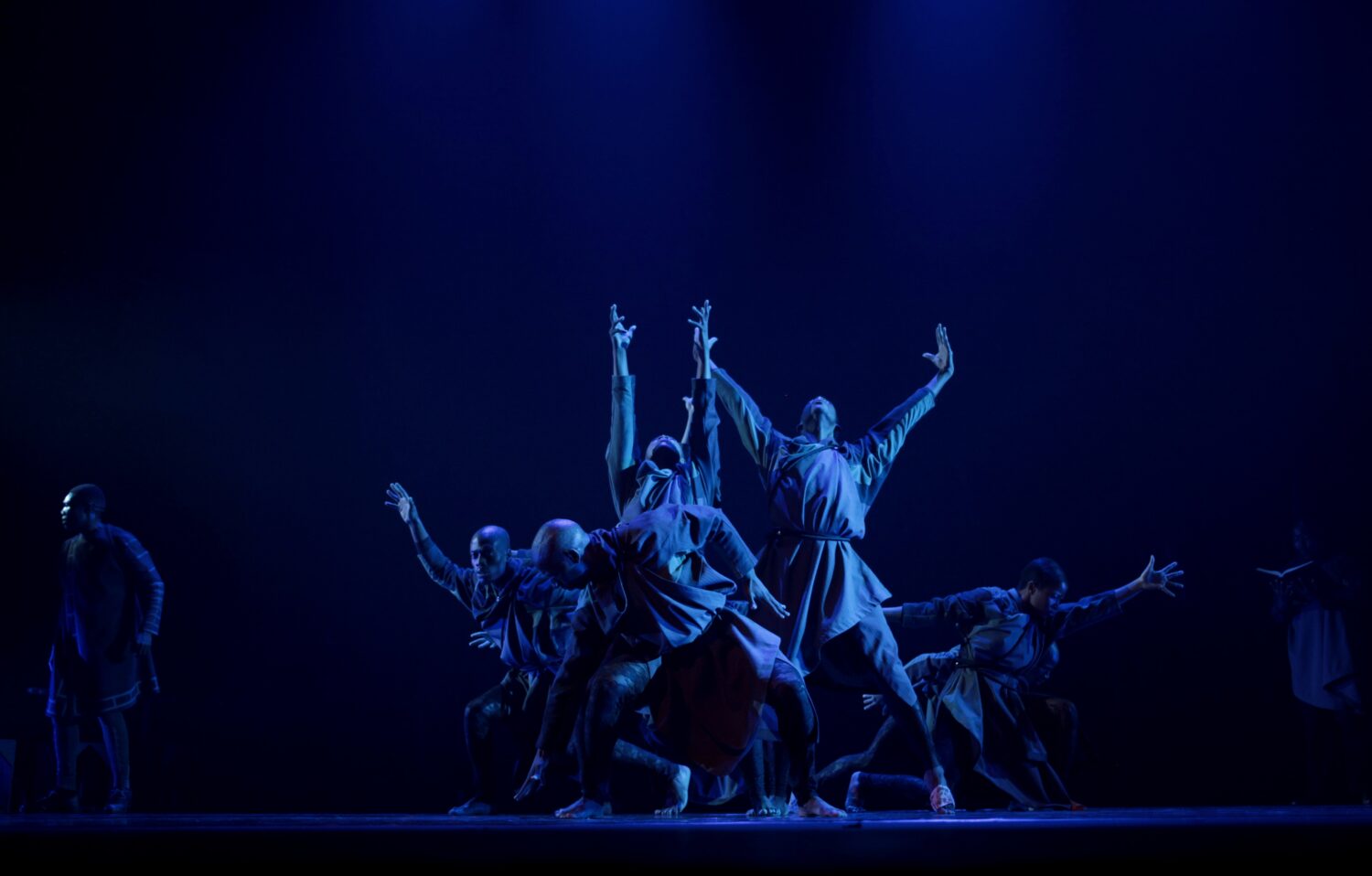
Gregory-Maqoma’s Cion: Requiem of Ravel’s Bolero. Photo by John Hogg.
The music probably deserves its own review altogether. Astounding in all respects, the continuous score is performed by four singers, under the musical direction of composer Nhlanhla Mahlangu. They do things with their voices that seem impossible. Snakey, slithery clicks, sucks and breaths create a beat-boxing effect, unlike anything I have ever heard. There is rapping, harmonic choruses, sorrowful poetry, and dancing and body percussion. In a demonstration of louche confidence, they also take on Maurice Ravel’s famous Bolero. The sparse snare drum which underpins the very beginning of the piece returns as three singers hold heavy scorebooks, singing the overlaid and repeating melodies in somewhat ironic, though no less accomplished, operatic voices. The fourth singer unapologetically holds a megaphone, and with complete virtuosity, raps out the famous bolero rhythm using words.
Different sections of choreography seem to tell a mixture of personal stories of the Toloki character. At one point, he is held back from a woman, perhaps lover or mother, by a group of people who could be a ship or could be jailers, all wearing white gloves in a strange and angry form of a minstrel show. Later on, there is a pas-de-deux between Toloki and one of the female dancers, who speaks a text about slave mothers learning not to love their children, while evading the overbearing advances of Toloki amongst floods of giggles. It’s an effective and jarring piece of text, but this section sits oddly amongst the rest of the piece, perhaps because it feels like a revealing of an otherwise mysterious hand.
Mannie Manim’s lighting design in conjunction with the set provides a series of otherworldly settings; lit from below with red and orange tonalities, the backdrop gives the sudden feeling of a grisly tomb full of skulls and bones; later, it is a stony rock face, perhaps underground, running with water in Ntuthuko Mbuyazi’s intricate sound design, as the dancers smack the floor with cloth sacking.
At the end of the piece, crosses cover the stage, transporting us right into the graveyard which we have contemplated throughout this cathartic “lament” of a piece (as described by Maqoma in the program). The dancers return to the stage, now dressed outrageously with copious black netting covering their faces, topped with large black Stetsons. They wear tap shoes on their feet. Stalking in, they channel a camp Fosse at the same time as providing a deadly serious comment on the expendability of all the lives brutally ended. We wait for it, and it comes: fully deserving of the clichéd term coup de theatre, the group tap out the rhythm of the Bolero, getting faster and faster as they stamp it out, literally dancing on their graves.
Maqoma writes about the piece as a “catharsis” of “universal grief,” and that “it champions our ability to bend together to share the burden of grief”. In this, I find him hugely generous. The piece is no less angry for being generous, no less outraged for being inclusive, no less sorrowful for being open-armed. In the strength of its own paradox, I find that this piece works on me, continuing to “permeate the living who are plagued by deaths that are not their own.”
Miranda Laurence is an independent dance dramaturg with over 10 years’ experience working in the dance and arts development sectors. As a dramaturg she works with artists in the UK and internationally. She is in demand as a guest speaker and workshop leader, recently for the Danish Dramaturgs’ Association, and the MA in Dance Producing at London Studios Centre. She has received funding from Arts Council England and other organizations for ongoing professional development in dance dramaturgy, and is currently an Advisory Board member of the Dramaturgs’ Network. Alongside her freelance practice, she is employed in an arts strategy development role at the University of Reading.
This post was written by the author in their personal capacity.The opinions expressed in this article are the author’s own and do not reflect the view of The Theatre Times, their staff or collaborators.
This post was written by Miranda Laurence.
The views expressed here belong to the author and do not necessarily reflect our views and opinions.

